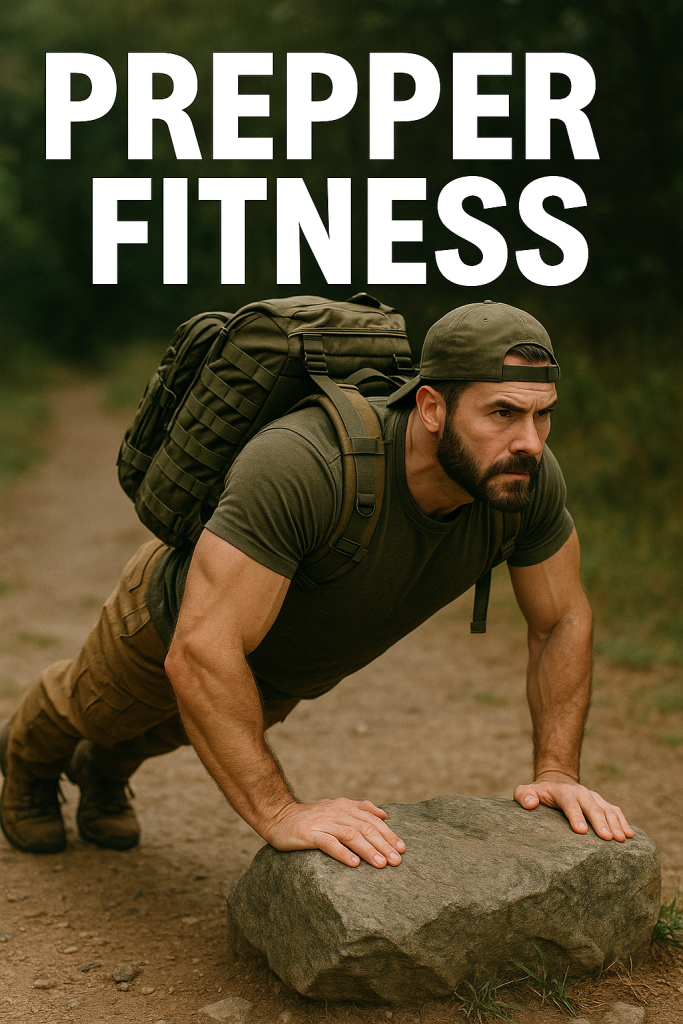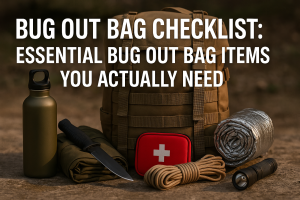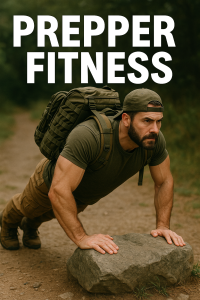What Is Prepper Fitness and Why It Matters More Than Ever

In today’s unpredictable world, where natural disasters, pandemics, and civil unrest can strike anytime, prepper fitness has become a critical part of modern survivalism. At its core, it’s not about looking good or chasing gym aesthetics. It’s about functional strength, endurance, and mental resilience —the three elements that could make the difference between thriving and merely surviving when the grid goes down.
Preppers understand that being fit means being self-reliant. You may have stockpiled gear, food, and water, but if your body can’t carry your bug-out bag or climb a fence, all that preparation might go to waste. That’s why prepper fitness focuses on real-world strength and durability rather than isolated gym workouts.
Core Pillars of Prepper Fitness
Functional Strength: Building Real-World Power
Forget about fancy machines. Preppers build functional power through push-ups, pull-ups, deadlifts, carries, and squats, movements that mimic survival scenarios like lifting, climbing, and carrying. Strength is survival currency.
Endurance and Stamina: The Foundation of Survival
When you’re on the move, escaping a threat or trekking for supplies, endurance becomes your best ally. Regular ruck marches, interval runs, and long hikes improve both cardiovascular health and mental tenacity.
Agility and Mobility: Staying Quick and Adaptable
Being able to move swiftly through debris, forests, or tight spaces could save your life. Stretching, yoga, and mobility drills are essential components of any prepper fitness plan.
Mental Resilience: The Hidden Side of Fitness
Survival isn’t just about muscle, it’s about mindset. Building mental toughness through exposure to controlled stress and challenge-based training sharpens your reaction under pressure.
Essential Prepper Fitness Exercises for Every Skill Level
Bodyweight Training for Preppers (No Gym Needed)
No gym? No problem. Preppers rely on push-ups, squats, lunges, burpees, and planks to build full-body strength anywhere. These movements can be done in confined spaces or in the field.
Weighted and Resistance-Based Survival Training
Adding resistance bands, sandbags, or a weighted backpack builds practical strength. These simulate real-world loads, like carrying water or supplies, without expensive gear.
Outdoor and Terrain-Based Workouts
Train in the environment you plan to survive in. Trail runs, obstacle climbs, and crawling drills simulate rough terrain and unpredictability, enhancing your overall adaptability.
Building a Prepper Fitness Routine That Actually Works
Consistency is key. Start with 3-4 training days per week, alternating strength and endurance days. Include a ruck march or outdoor session weekly to mimic real conditions.
Example Weekly Plan:
| Day | Focus Area | Sample Activity |
|---|---|---|
| Monday | Strength | Push/Pull Training + Sandbag Carries |
| Tuesday | Endurance | 3-Mile Ruck or Trail Run |
| Wednesday | Mobility | Stretching, Yoga, or Active Recovery |
| Thursday | Tactical | Climb, Crawl, or Obstacle Course |
| Friday | Mixed Conditioning | HIIT or Circuit Drills |
Nutrition for Preppers: Fueling the Survival Body
Your body is your bug-out bag, treat it like one. High-protein, shelf-stable foods like jerky, nuts, lentils, and oats are perfect for both training and storage. Hydration is equally vital: learn to purify and conserve water efficiently.
The Role of Mental Conditioning in Prepper Fitness
Stress inoculation is a survival superpower. Train under mild discomfort, cold, heat, or fatigue, to build resilience. Pair this with breathwork, mindfulness, or stoic philosophy to maintain calm in chaos.
The Ultimate Bug-Out Challenge Workout

Introduction: Train Like It’s Day One of the Grid Down
When it’s time to move fast, far, and under pressure, your physical readiness will define your success. The Bug-Out Challenge Workout is built to simulate real-world survival demands, strength, endurance, mobility, and grit. This is prepper fitness in action, turning theory into hard-earned capability.
This challenge mimics the physical stressors of a bug-out scenario, carrying gear, navigating rough terrain, and staying mentally sharp under fatigue. All you need is a backpack (15–40 lbs), access to the outdoors, and the will to push beyond comfort.
🗓️ 7-Day Bug-Out Challenge Workout Plan
| Day | Focus Area | Workout Description |
|---|---|---|
| Day 1 – The Loadout | Strength + Endurance | Gear-Up March: 3-mile hike/ruck with 25–35 lbs pack. Every 10 minutes: 10 squats, 10 push-ups, 10 lunges. |
| Day 2 – Bug-Out Sprint | Speed + Agility | 30-Min Tactical Intervals: 100-yard sprint → 10 burpees → 100-yard jog → 15 air squats. Repeat for 5 rounds. |
| Day 3 – Shelter Build Strength | Core + Stability | Functional Drills: 3 sets each – carry heavy rocks (50m), plank (60s), lift logs (5 reps), side shuffles (30s). |
| Day 4 – Recovery & Resilience | Mobility + Mind | Stretch & Breathe: 20 min mobility flow + 10 min cold exposure or deep breathing (Wim Hof style). |
| Day 5 – The Long March | Endurance | Ruck Run: 5–8 miles with your pack. Add elevation or natural obstacles. Maintain steady pace and hydration. |
| Day 6 – Tactical Challenge | Strength + Coordination | Circuit Training: 3 Rounds – 10 pull-ups (tree branch or bar), 20 push-ups, 30 squats, 40 sit-ups, 50 jumping jacks. |
| Day 7 – Survival Simulation | Full Integration | Scenario Drill: Carry your pack 3 miles, stop every 15 mins to perform survival tasks (crawl, climb, drag, lift). |
🧠 Why This Works for Real Preppers
The Bug-Out Challenge Workout taps into every essential prepper attribute:
- Strength to carry gear, move debris, and lift essentials
- Endurance for long-distance mobility
- Agility to adapt to unpredictable terrain
- Mental Grit for survival fatigue and pressure situations
Unlike traditional fitness programs, this plan builds functional readiness, not aesthetics. It’s designed to prepare your body and mind for survival realities, from power outages to wilderness evacuation.ation.
FAQs About Prepper Fitness
Q1: What is the main goal of prepper fitness?
A: To build the physical and mental capacity to survive real-world emergencies through functional training.
Q2: How often should preppers train?
A: 3–5 times per week, mixing strength, endurance, and tactical skills.
Q3: Do I need equipment for prepper workouts?
A: No, most exercises rely on bodyweight or minimal gear like backpacks and ropes.
Q4: Can beginners start prepper fitness safely?
A: Absolutely! Start with basic bodyweight exercises and short endurance sessions.
Q5: Is nutrition part of prepper fitness?
A: Yes, diet and hydration directly impact your strength and survival readiness.
Q6: What’s the best prepper fitness mindset?
A: Discipline, adaptability, and self-reliance.
Becoming a Fit, Fearless, and Prepared Survivor
In the end, prepper fitness isn’t a trend, it’s a lifestyle. It’s about building a body and mind capable of facing the unknown with courage and competence. Every push-up, every ruck march, and every mental challenge brings you one step closer to true preparedness.
When the moment comes, your fitness will be your first line of defense.





